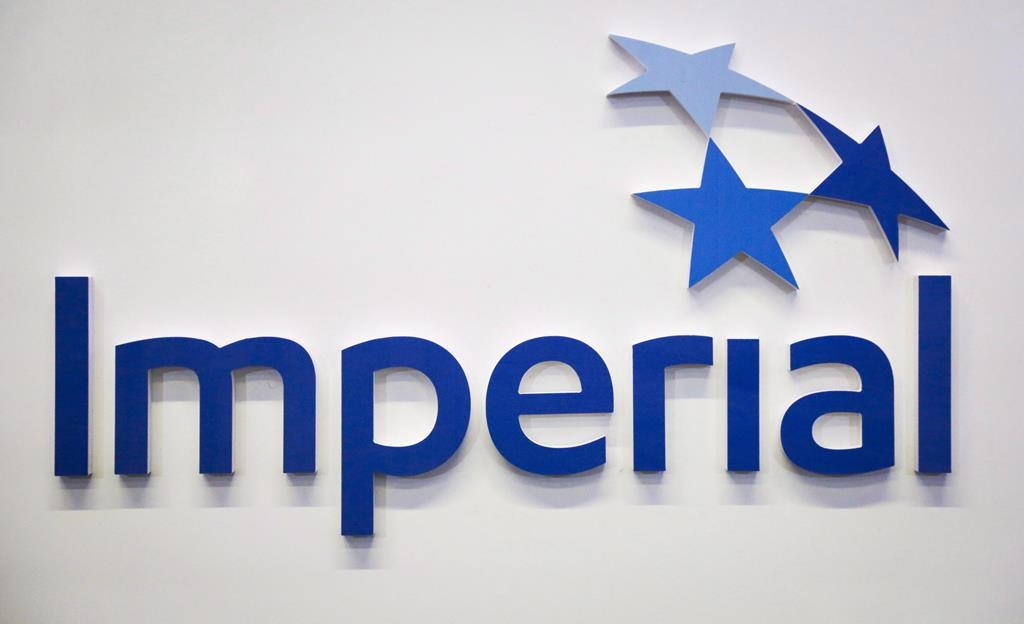Support strong Canadian climate journalism for 2025
CALGARY — Imperial Oil Ltd. could begin injecting and storing harmful CO2 emissions from its Cold Lake operations by the middle of this decade — well before the completion of a massive carbon capture and storage transportation line that has been proposed for the Canadian oilsands, the company said Friday.
Imperial — which on Friday reported it earned $1.25 billion in its first quarter, up from $1.17 billion in the same quarter a year earlier — is a member of the Pathways Alliance, a consortium of oilsands companies that has committed to spending $16.5 billion on a massive carbon capture and storage network to be built in northern Alberta.
The project is the centrepiece of the oilsands majors' joint commitment to reach net-zero greenhouse gas emissions from production by 2050. It would involve the construction of a 400-kilometre pipeline that would transport captured CO2 from more than 20 oilsands facilities and move it to a proposed hub in the Cold Lake area of Alberta for safe underground storage.
The line would also be available to other industries in the region interested in capturing and storing CO2.
The Pathways group has not yet committed to going ahead with the project, although it has said it intends to apply for regulatory approval for its carbon pipeline as early as this fall.
The Alberta government has already approved for further evaluation the Pathways group's application for geological storage space allocation in that area, though final approval has yet to be granted.
But Imperial's chief financial officer Dan Lyons said on a conference call with analysts Friday that the company is geographically and geologically advantaged to be an early mover on carbon capture and storage because of the proximity of its Cold Lake operation to the planned sequestration hub.
It means that the company could begin capturing carbon from its Cold Lake facility and injecting it into the hub earlier, while other companies will have to wait until the completion of the transportation network.
"For that reason, we anticipate that our Cold Lake CCUS (carbon capture and storage) project, our very first capture project, will be in that Cold Lake area," said Lyons.
"We think it could be one of the very first projects for the whole Pathways Alliance, again, because of that advantaged proximity to the hub."
Imperial, which hasn't made a final investment decision on the Cold Lake carbon capture project, said it intends to begin engineering and design work this year with a targeted startup date sometime within the mid-to-late decade.
The entire Pathways Alliance carbon capture network, if it goes ahead, would be one of the largest in the world. The Pathways Alliance says it could reduce net carbon dioxide emissions by about 10 million tonnes per year by 2030 from the first 14 facilities to use the system.
Alberta’s oil and gas sector is the country’s largest polluter, and while oilsands companies have managed to reduce their emissions per barrel, total emissions from the oilsands have more than doubled since 2005 due to increased production.
The federal government's own net-zero plan includes an interim target of reducing Canada's emissions by at least 40 to 45 per cent below 2005 levels by 2030 — a goal and time frame that the oil and gas industry has long suggested is unrealistic.
However, Lyons said the Pathways group is still hopeful it can have the carbon transportation pipeline up and running before that 2030 target.
"There still continues to be a lot of work to do to fully define all of the regulatory requirements, the fiscal support that's needed... We still have a ways to go, both with the federal government and the provincial government," he said.
"But we're still optimistic that that trunk line can be built and operational prior to 2030, as well as many projects connected to it. And that obviously is a key enabler to helping the country meet its climate goals."
Imperial hiked its quarterly dividend Friday, saying it will now pay a quarterly dividend of 50 cents per share, up from 44 cents per share.
The increased payment to shareholders comes as the company says its profit amounted to $2.13 per diluted share for the quarter ended March 31, up from $1.75 per diluted share a year earlier.
Total revenue and other income amounted to $12.12 billion, down from $12.69 billion in the first three months of 2022.
Production averaged 413,000 gross oil-equivalent barrels per day, up from 380,000 in the same quarter last year.
Meanwhile, refinery throughput averaged 417,000 barrels per day, up from 399,000 a year ago, as refinery capacity utilization rose to 96 per cent compared with 93 per cent a year earlier.
This report by The Canadian Press was first published April 28, 2023.





Comments
This is just more talk, resulting in sleepwalking into climate disaster. It is much too late, and did you notice that the plan is for CCUS; the U stands for ‘use’ as in using the carbon dioxide to pressure more oil out of old wells.
Yeah, sure. We should believe everything Exxon tells us.
"Imperial sees its Cold Lake carbon capture project up and running by mid-decade."
By mid-decade sodium batteries will have penetrated the world EV and renewables market, potentially cheaper and much more powerful than lithium ion. EV sales will be boosted by availability and affordability. Oil demand will start to plateau before entering an inexorable decline due to diminishing demand for gasoline. And that's just in Alberta. Its primary market is the US which will be in its fourth year of battery, EV and renewable power production, greatly catalyzed by Biden's 2022 IRA economic boost.
CCS is a white elephant, a product of magical thinking and economic illiteracy.
I would hazard a guess that Imperial et al will not just have to write down the exorbitant cost of CCS by 2030, having not done their research (or hid the results) and grossly underestimated the speed of the transition, but will probably pull out a Plan B to abandon its Alberta oil sands production as a last resort. Today we are witnessing the birth of stranded assets, or at least the major oil companies ramping up their tradition of begging for bailouts to unprecedented heights. Alberta and the feds don't have enough financial resources to fork over, especially to foreign owned multi-billion dollar oil companies, let alone the 22% minority of them that are actually Canadian owned.
My guess is that even conservatives will choke on the sheer gall and the size of proposed bill, and will have to chose between healthcare and schools and unheard of levels of corporate welfare. I hope there would be severe political consequences for conservatives who would dare to sacrifice Canadian taxpayers for their foreign donors.